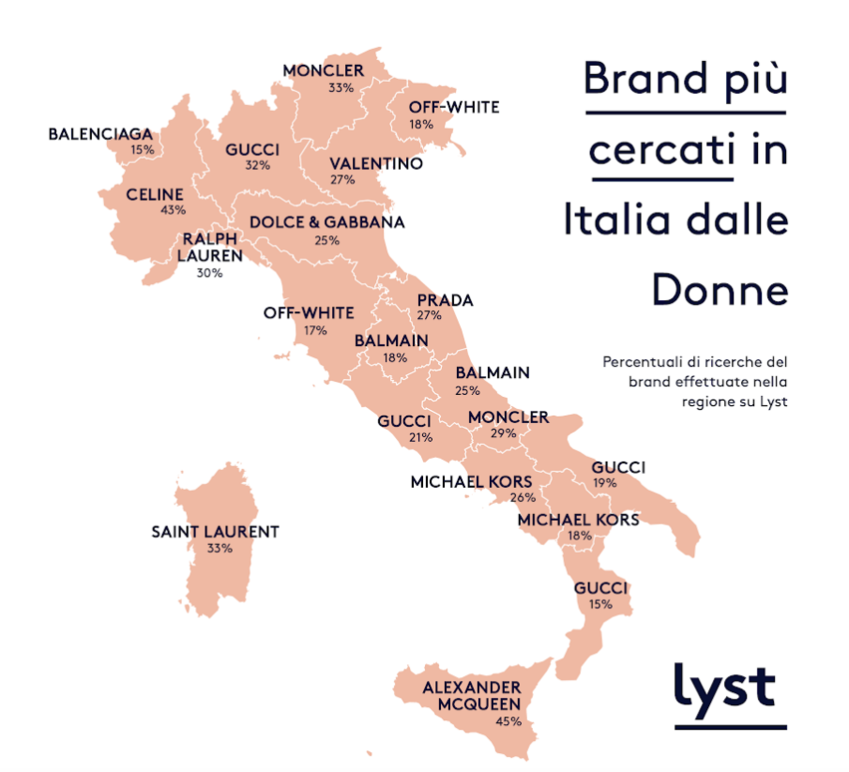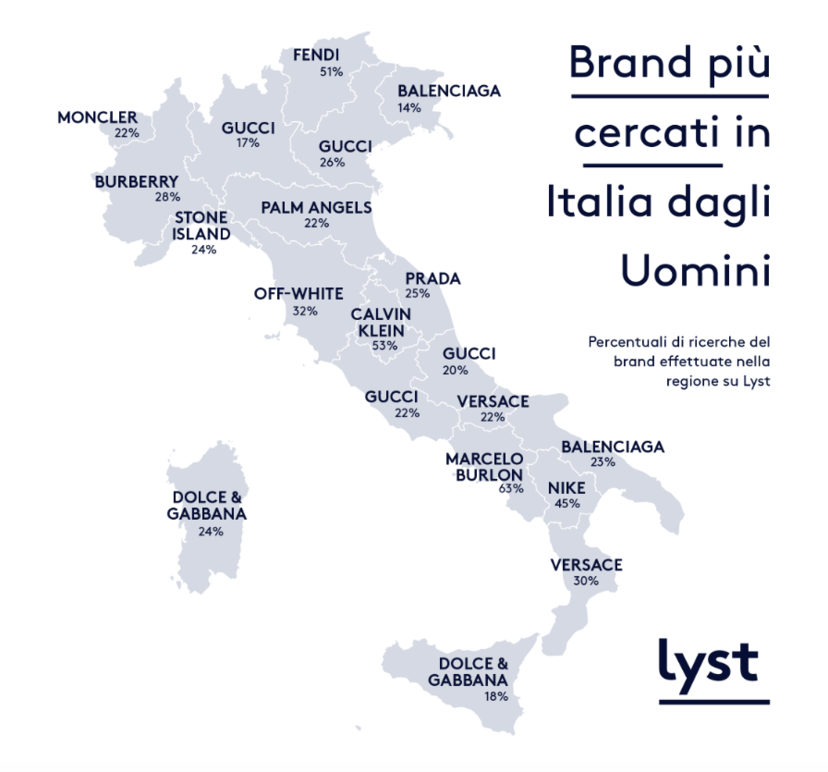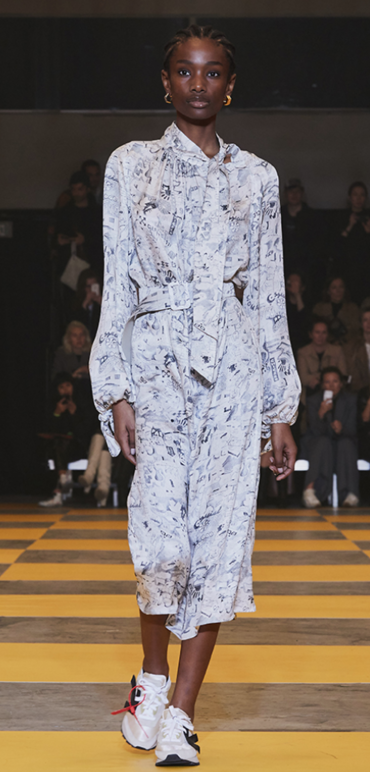Mapping Italian Fashion Trends
It’s no news that Italians love designer fashion, but which are the most popular brands across the peninsula? In an initiative named Fashion Geography, Lyst, the fashion industry’s leading search engine, generated a map revealing the most researched brands by Italian men and women in each region.
Lyst was founded in 2010 by Chris Morton and Sebastian Trepca in Shoreditch, London, as “a way for people to find the fashion they always wanted.” Today, the website brings together 5 million products from 12,000 brands. Last year, more than 70 million shoppers across 120 countries began their searches on the platform. As the About page reads, they “track more than 10 million global searches a month, crunching queries, page views and sales statistics every minute, and [...] use this data to tell the stories of what the world wants to wear.”
The data they recorded for Fashion Geography reveals the following about the preferences and tendencies of Italian consumers:
The appeal of ‘Made-in-Italy’ persists, particularly thanks to Gucci, which garners attention across the country. The Florentine brand is in fact the most researched by women in Lombardy (32%), Lazio (21%), Puglia (19%), and Calabria (15%) and by men in Veneto (26%), Lazio (22%), Abruzzo (20%), and Lombardy (17%).
Amongst women, other popular Italian brands are the classic Valentino (the most popular in Veneto) and Prada (Marche), as well as the more contemporary luxury streetwear brand Off-White (Tuscany and Friuli Venezia Giulia). However, Italian women appear to be just as interested in foreign labels, with brands such as the French Celine topping searches in Piemonte (43%) and the British Alexander McQueen dominating Sicily (45%), amongst others.
Italian men show particular interest in Dolce & Gabbana (24% in Sardinia and 18% in Sicily, where the designers are from) and Versace (30% in Calabria and 22% in Molise). Though classic houses persist, luxury streetwear brands are becoming increasingly popular amongst male consumers, even more so than amongst women. Three young Milan-based brands, Marcelo Burlon, Off-White, and Palm Angels are respectively the most popular in Campania, Tuscany, and Emilia Romagna.
As with women, some Italian men also prefer foreign brands, particularly in Piemonte (Burberry), Umbria (Calvin Klein), and Basilicata (Nike.)
Fashion Geography also reveals the types of fashion items that Italians are looking up. Sneakers are the most popular with both men and women, even beating out the quintessential female accessory, the bag, which does, however, remain within the top 5 desired products with crossbody bags coming in second place, followed by shoulder bags. Jackets too are extremely popular across genders.
Perhaps one of the most surprising finds is that Italian men spend on average more money than their female counterparts: 267 euro against 249 euro, subverting in a way the stereotype of the frivolous woman who squanders every penny on clothes and accessories.
Although this data is certainly interesting it is important to keep in mind that it does not account for the population’s overall spending habits.
For one thing, Fashion Geography solely relies on information gathered through the use of the Lyst platform, which means that these statistics reflect the preferences of Lyft users but do not take into account the searches made using other websites, of which there are quite a few (such as Farfetch, Yoox, and Luisa Via Roma, just to name some), not to mention all the generic, non fashion-specific search platforms.
Additionally, searching for a product does not necessarily lead to purchasing it, meaning that these maps are, if anything, more reflective of each region’s desires rather than what its inhabitants actually buy and wear.
This being said, knowing the aspirations of fashion consumers across Italy is certainly useful, particularly for both national and global brands wishing to market their products on the Italian market. It can also be seen as a reflection of the broader economic and cultural behaviors and influences of Italians today.










































i-Italy
Facebook
Google+
This work may not be reproduced, in whole or in part, without prior written permission.
Questo lavoro non può essere riprodotto, in tutto o in parte, senza permesso scritto.